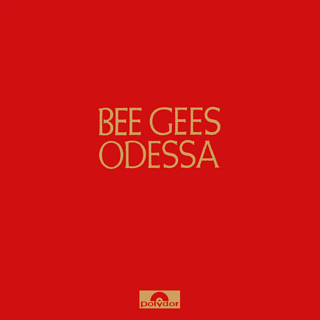Music Library Catch-up!: B-52s, Bats, Beach Boys, Beck, Bee Gees, Beethoven, Adrian Belew, Andrew Bird, Birthday Party, Bis-quits
The B-52s – The B-52s (1979). This is the sound of sublimely silly dancing joy. There should be a sociological dissertation in the frisson between all the Southern post-punk/jangle bands that went out of their way to incorporate disco and dance beats into their sound and the Southern indie audiences who steadfastly refuse to dance to this music. I wrote briefly about the B-52s back at the beginning of this project here.
The Bats – Couchmaster (1995) and Free All The Monsters (2011). Speaking of folky jangle-rock, the Bats continue to churn out excellent folk-psych rock with a steady focus. If I didn’t know before starting that these albums were released 16 years apart, I would have thought they were roughly contemporaries. On a personal note, I managed to say hi to Robert Scott when he was in town with The Clean earlier this year, which made my day. I’ve written about the Bats before here, here, here, and here.
The Beach Boys – The Smile Sessions (recorded 1967, released 2011). Oh, my beloved Beach Boys. Giving the uncompleted SMiLE album the same treatment as the Pet Sounds Sessions box of the mid-1990s, this box set collects all the available tracks, scratch tracks, and false starts from the aborted SMiLE sessions. This edition starts with a reconstructed SMiLE from the original sessions that sounds quite similar to the Brian Wilson-Wondermints collaborative SMiLE from a few years back. This one is better, though, because it’s the fucking BEACH BOYS on vocals. And the Wrecking Crew on instruments. This is the 5-disc version with many, many variations on the tracks as Brian Wilson tried to figure out what he was doing. One of the best albums of the rock era, even though it just saw the light of day at the end of last year. Previous posts on SMiLE and the Beach Boys here, here, here, here, and here.
Beck – Record Club 4: Kick and Record Club 5: Yanni Live At The Acropolis (both 2010). Beck’s Record Club concept from 2009-10 was one of his best ideas in years. The first of these was a cover of the INXS album with St. Vincent, Liars, and Sergio Dias of Os Mutantes. Although the INXS album itself sounds like 9th grade to me now, the Record Club’s cover is full of pleasantly alien sounds and appealing looseness. Beck made the Yanni cover album with Tortoise and Thurston Moore, and it is, as you might guess from these collaborators, a hot noisy mess drenched in irony. Previous Beck and Record Club entries here, here, and here.
The Bee Gees – Odessa (1969). This is a great example of the early, Beatles-besotted Bee Gees. Like the similar and similarly titled Zombies album Odessey And Oracle, the Bee Gees deliver a bunch of little pop symphonies one after another with each track burning with ambition and bursting with pop hooks. Excellent stuff. Earlier Bee Gees entry here.
Beethoven: Symphony No. 5 (Roger Norrington and Radio-Sinfonieorchester Stuttgart, 2003). I must claim my usual inability to speak intelligently about classical music here (and I know, you’re asking why I would limit this to just classical music). It is Beethoven. The music is moving and intellectually stimulating. Not even going to link to my last attempt to speak about Ludwig van B.
Adrian Belew – Lone Rhino (1982). Belew’s first solo album follows years of making his mark as the most fluid and synthetic-sounding guitarist in the world on the Talking Heads’ Fear Of Music and Remain In Light and as the vocalist/guitarist for the early 1980s New Wave version of King Crimson. Belew is an endlessly creative guitarist, able to conjure otherworldly sounds from his instrument and yet still find the heart of the song, and this is a stunning album. My King Crimson notes are here and here.
Andrew Bird – Break It Yourself (2012). Here’s a bit of a troublesome album to assess. It’s my least-favorite Bird album in years, but it’s also one of my favorite albums of 2012 so far. Perhaps I have not sat with it as much as I should have, but none of the tracks have really taken root in my head. So, for the time being, let’s say that it’s enjoyable, but it’s not quite as epic as I have come to expect from Mr. Bird. Previous Andrew Bird here, here, here, here, here, and here.
The Birthday Party – Junkyard (1982), Mutiny/The Bad Seed (1983), and Live 81-82 (released 1999). This is awesome stuff: violent, harsh, ugly, and utterly extraordinary. I’ve become quite enamored of Nick Cave and the Bad Seeds recently, and hearing how Cave and Harvey sprung from this unholy union with Rowland Howard is breathtaking and sometimes frightening. Previous Cave post here.
The Bis-quits – The Bis-quits (1993). Inside baseball, Nashville-style. This sub-supergroup brings together Tommy Womack of Government Cheese (and author of The Cheese Chronicles, a brilliant memoir of life on the road with a second-string band), Will Kimbrough (who is not just a great singer/songwriter/guitarist on his own terms, but one of the hardest working sidemen in all of Music City), Mike Grimes (proprietor of Grimey’s, which is Nashville’s greatest music store), and Tom Meyer on drums. Great stuff, although the different influences of the personalities involved means that it’s a bit uneven. My pal Andy wrote an article about the Bis-quits and the Nashville scene for a little magazine called The High Hat that figures large in my past. One of these tracks discussed here.



























